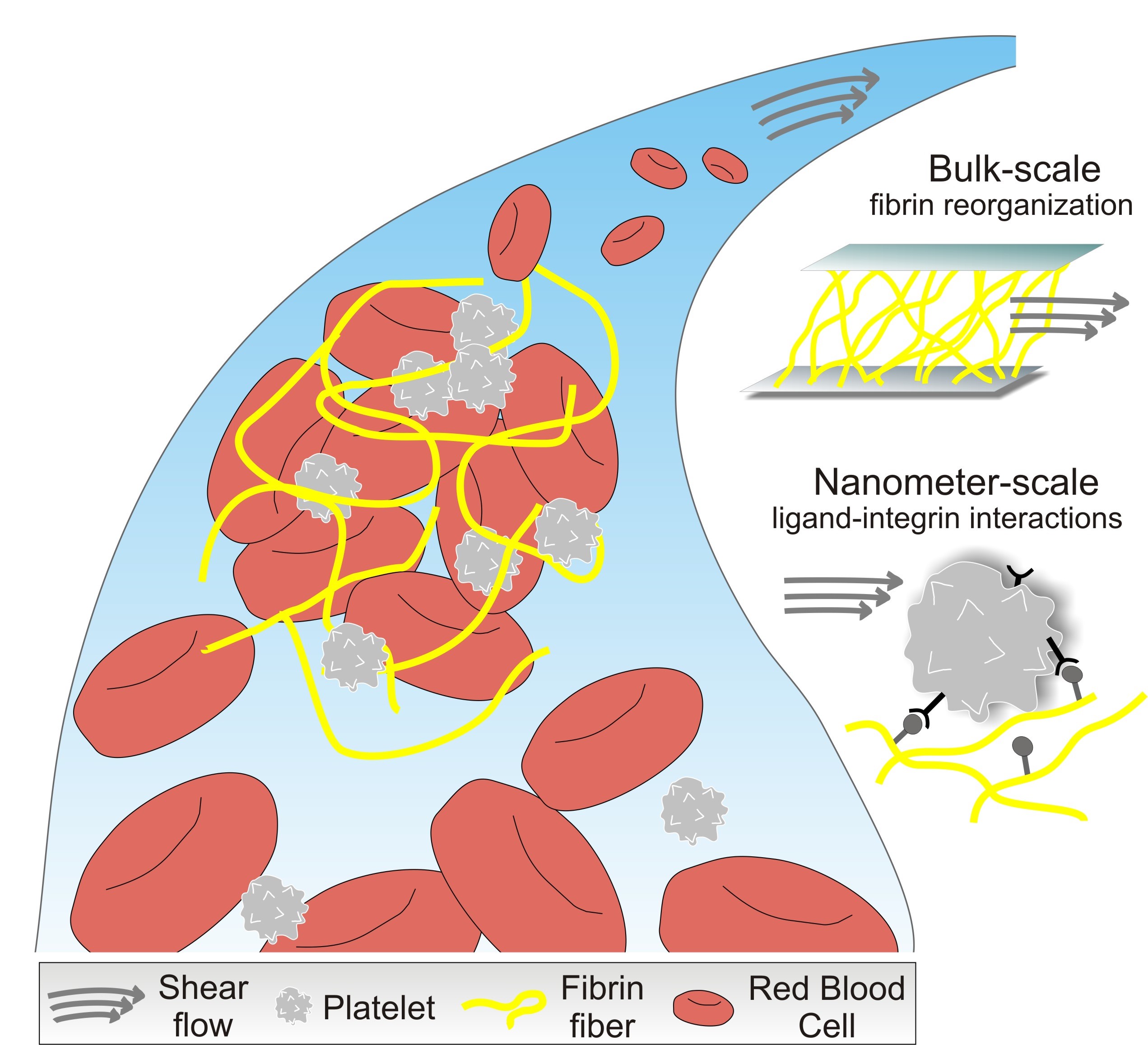The effect of shear flow on fibrin clot structure and fibrin-platelets interactions
PI: Izabela Piechocka
Funding agency: Foundation for Polish Science (FNP)
Programme: HOMING
Grant period: 1th October 2017 - 29th September 2019
Project budget: 733 904,00 PLN

Fibrin and platelets are the two main components involved in blood clot formation, preventing bleeding and promoting wound repair. In vivo, the formation of blood clots takes place in the presence of flowing blood that exerts a continuous shear force on the whole structure, influencing its mechanical properties such as extensibility and resistance. The exact role of the shear flow in bulk organization of fibrin networks and in fibrin-platelet interactions at the nanometer scale still remains, however, unexplored.
In our study we bring together parallel-plate flow chamber with confocal and super-resolution microscopy techniques (in collaboration with Prof. Maria Garcia-Parajo, ICFO, Spain) to follow in situ changes in fibrin network structure and in spatial organization of fibrin-platelets adhesion receptors, as a model system that mimics blood clotting in vivo.
Deep knowledge of the role of shear flow in fibrin network organization and its interactions with platelets is important not only in light of the biological function of blood clots but it is also vital for the development of fibrin-inspired wound dressing materials that upon application remain exposed to the forces generated by flowing blood.
This project is financed by the Foundation for Polish Science (FNP) under the program HOMING and co-financed by the European Regional Development Fund within the framework of Smart Growth Operational Program 2014-2020 (SG OP).



